
Tree Diseases: Taking Care of London’s Trees
Trees are precious. The Royal Parks host around 170,000 of them, including 250 varieties and 1,500 veteran and ancient trees.
Tree-mendous trees
Not only do they provide a beautiful backdrop for city dwellers, trees also provide habitats for thousands of species: fungi, insects and mammals, such as bats and birds. They help to trap dust, absorb pollutants and remove carbon dioxide – helping slow global warming. They also cool urban air temperatures and prevent flooding by absorbing storm water.
Threats to the UK’s trees
However, like all living, dynamic species, trees do not live forever. They become weakened and damaged by age, weather, pollution and through infections caused by tree pests and diseases.
There are a number of common tree pests and diseases which currently threaten trees across London’s green spaces, including The Royal Parks - along with the UK’s woods, forests and beauty spots. There is also a strong likelihood that new pests and diseases will make their way over to the UK in the future.
The Royal Park’s expert tree care
The Royal Parks employs a team of expert tree specialists who inspect and assess the parks’ trees regularly. The team carries out a combination of habitat management to promote ecology and wildlife diversity, risk management to ensure the safety of visitors, and visual management to keep the trees and the parks looking their best.
They monitor and respond to any changes to the health of trees currently and plan ahead in order to ensure that the treescape is resilient in the future – with special consideration to the potential arrival of new trees diseases to the UK and in the parks, to ageing trees and other pressures such as climate change and pollution.
Our experts identify the best ways to boost trees’ health so they can fight potential infections better. For example, compost ‘tea’ - a ‘consommé’ of beneficial bacteria, social microorganisms and fungi – is sometimes added to compost. This mixture of ‘helpful’ fungi and microorganisms supercharges the compost which is added to soil to help trees resist and fight infections. Material called mulch may also be added to the surface of soil to preserve soil moisture and improve soil health.
But it is inevitable that some trees will be unable to fight an infection despite the best care. Sometimes, if a tree is unable to fight off a disease, it may be necessary to remove branches that have become damaged or have died. As a last resort, if the damage is insurmountable, the whole tree may need to be removed.
Planning for the future
Between two to three hundred new trees are planted every year across the parks for a variety of reasons – for example improving a local habitat - and a number of these are replacements for losses.
The Royal Parks contain a high proportion of native species with a rich history of rare and unusual species, varieties and specially cultivated examples. This is sustained where possible when planting new trees, to maintain diversity.
When planning ahead, our experts take into account the characteristics of each tree species such as the growth pattern, life expectancy, structure and strength of the wood and which ones are susceptible to particular infections. Our team identifies the most appropriate species for each park and ensures a disease-resilient landscape to be enjoyed for generations to come.
1. Horse chestnut bleeding canker
What is it?
Horse chestnut bleeding canker is caused by a bacteria called Pseudomonas syringae pv. aesculi or, more rarely, a type called Phytophthora spp. The disease affects horse chestnut (Aesculus hippocastanum) and red horse chestnut (A. x carnea).
What happens?
This is a bacterial disease of the bark of horse chestnut. The disease kills strips of bark and cambium (the layer of material just under the bark made up of actively-dividing cells generating growth). Dark, oval-shaped sunken wounds appear – called cankers - which ‘bleed’ a dark or reddish-brown sticky fluid. The trees rapidly decline, and fungi decays and weakens the main structural branches and trunk.
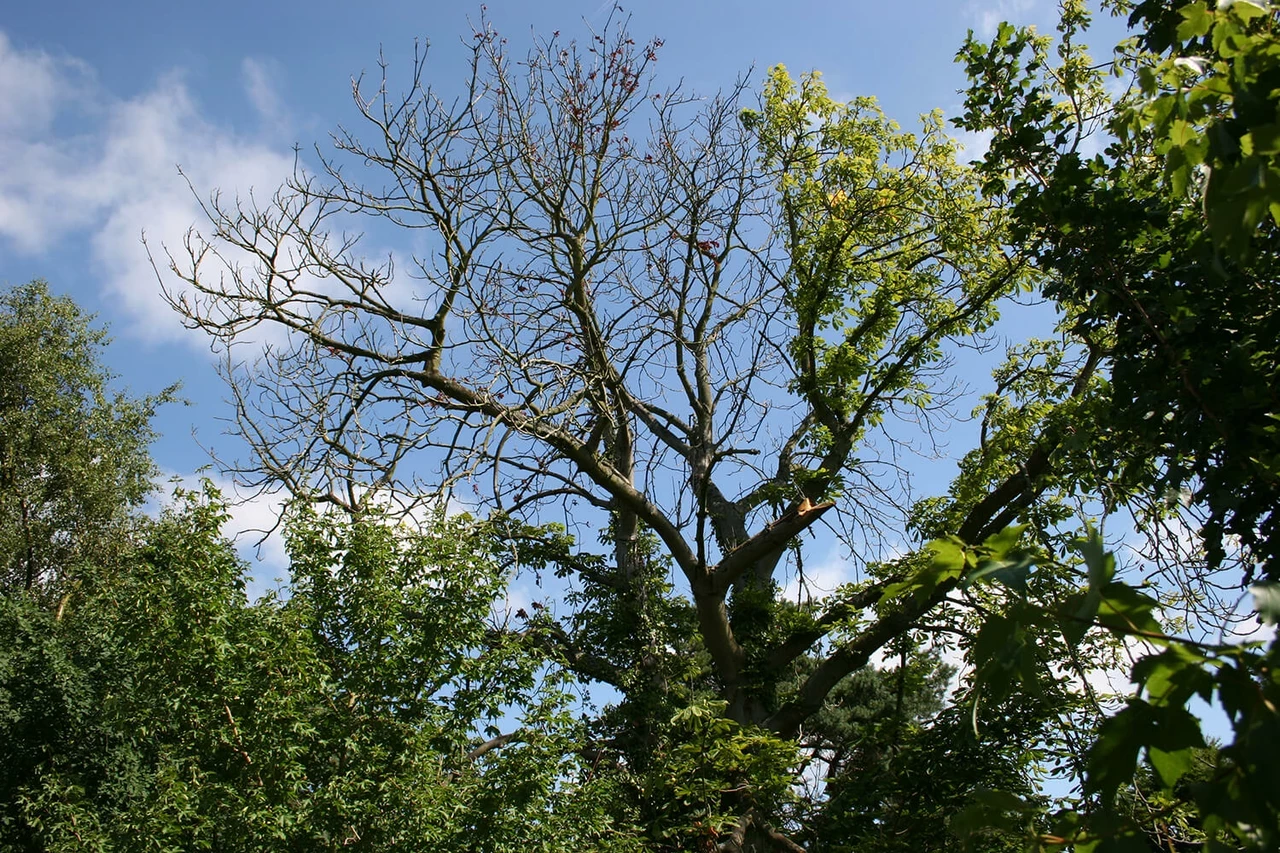
2. Massaria
What is it?
Massaria is caused by the fungus Splanchnonema platani which causes the death and decay of branches of London plane trees (Platanus x hispanica).
What happens?
Initially, a pinkish strip appears on the upper surface of an infected branch. The infection damages the branch from the point it joins the tree and can extend along the branch. The disease can kill the bark and cambium (the layer of actively growing material just under the bark).
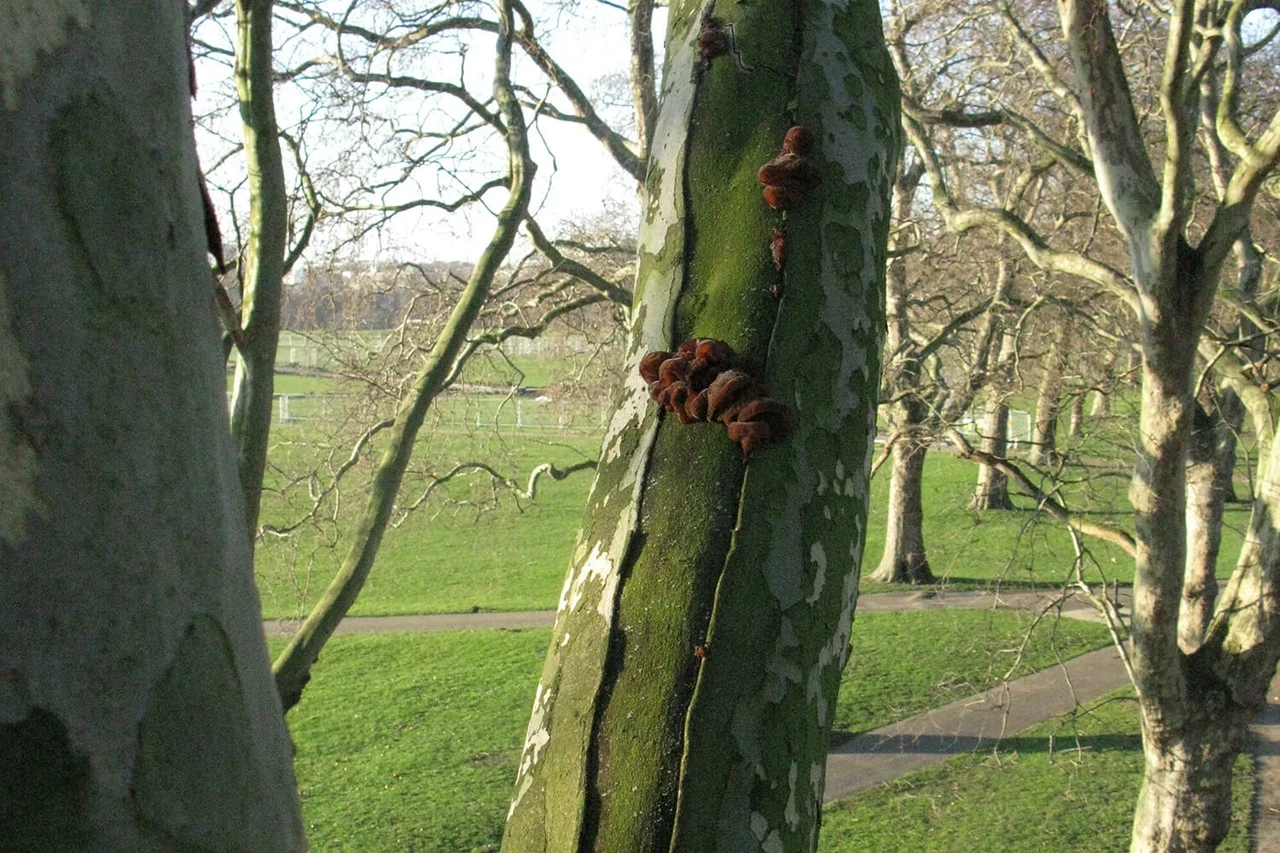
3. Oak processionary moth
What is it?
The caterpillars of the invasive oak processionary moth (Thaumetopoea processionea) can be found in some oak trees (trees in the Quercus genus).
What happens?
It is an invasive, non-native insect pest of oak trees. The caterpillars ‘progress’ along the bark of the trees and can cause extensive defoliation of oak trees. This can cause a lot of damage – ultimately killing the tree. Find out more about oak processionary moth in our parks.
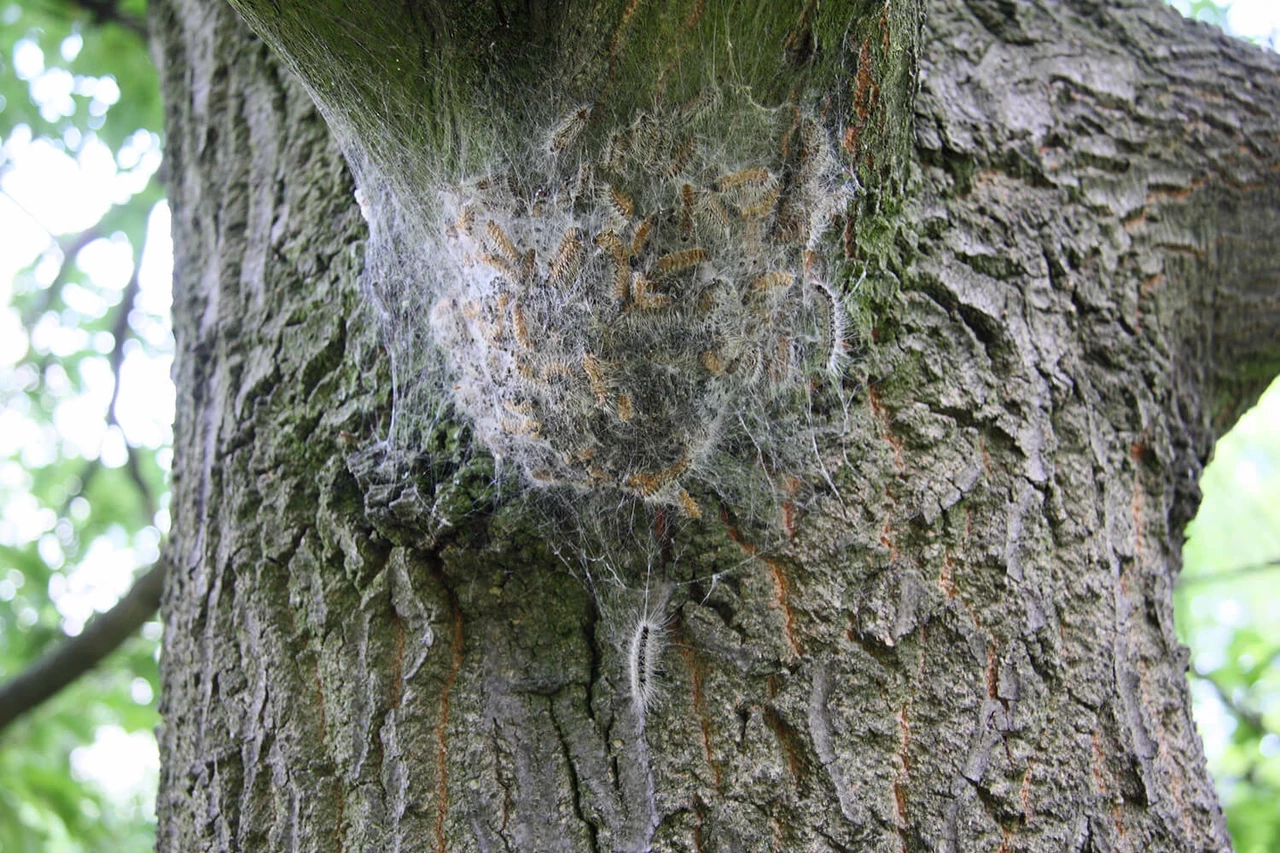
4. Acute oak decline
What is it?
This condition is the culminative effect of multiple infections, including bacterial infections, affecting oaks (trees in the Quercus genus). It is likely that trees affected have already been weakened by environmental factors. The disease is seen in dry warm locations in the UK, where there are high levels of pollution.
What happens?
This poorly-understood syndrome causes a rapid decline of oak trees. The trees develop symptoms over one-five years and the disease can kill them. Symptoms include dark-coloured ‘weeping’ through cracks in the bark - and the tree canopy becomes thin and unhealthy.
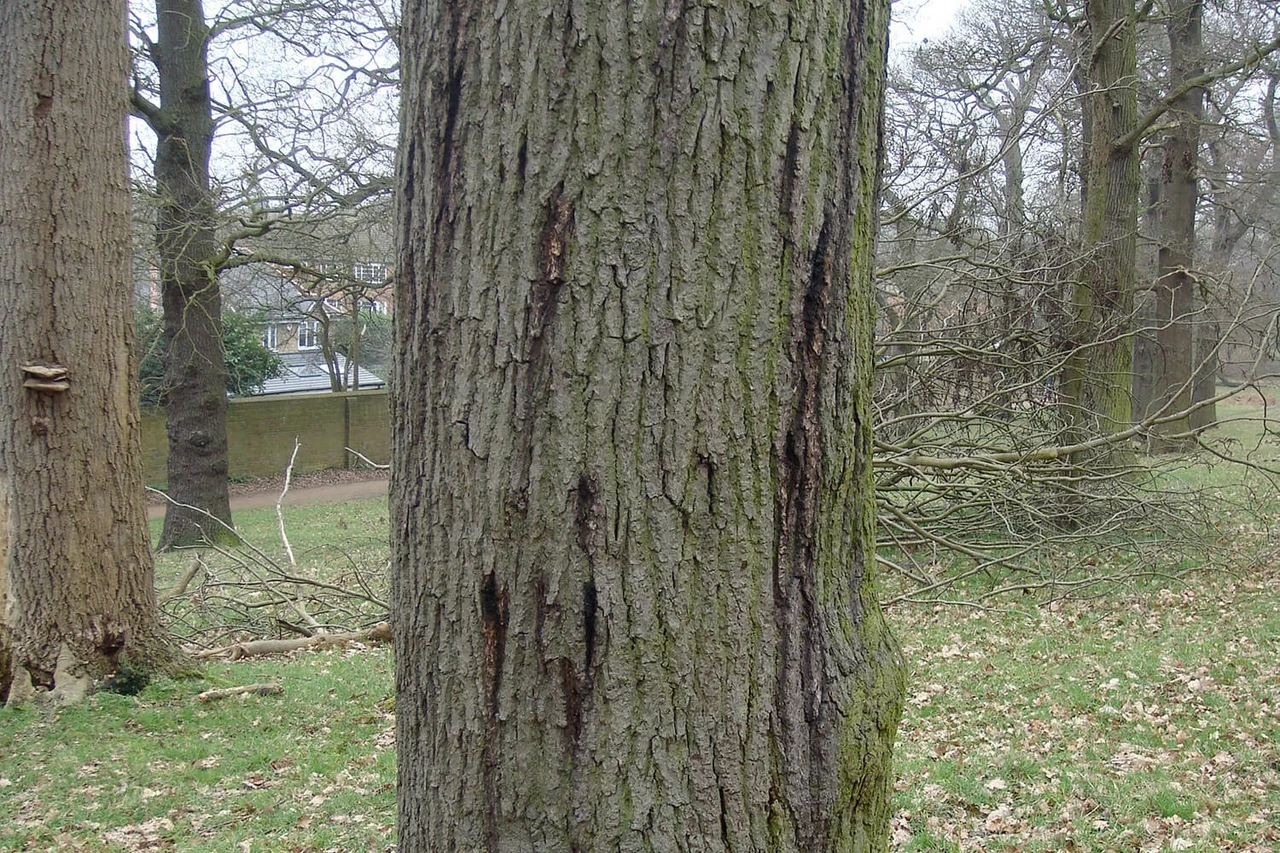
5. Ink stain disease
What is it?
A fungus (Phytophthora) affecting sweet chestnut trees (Castanea sativa).
What happens?
This fungus kills trees’ fine roots, leading to a reduced leaf size, yellowing of leaves - and gradually the tree canopy starts to die.
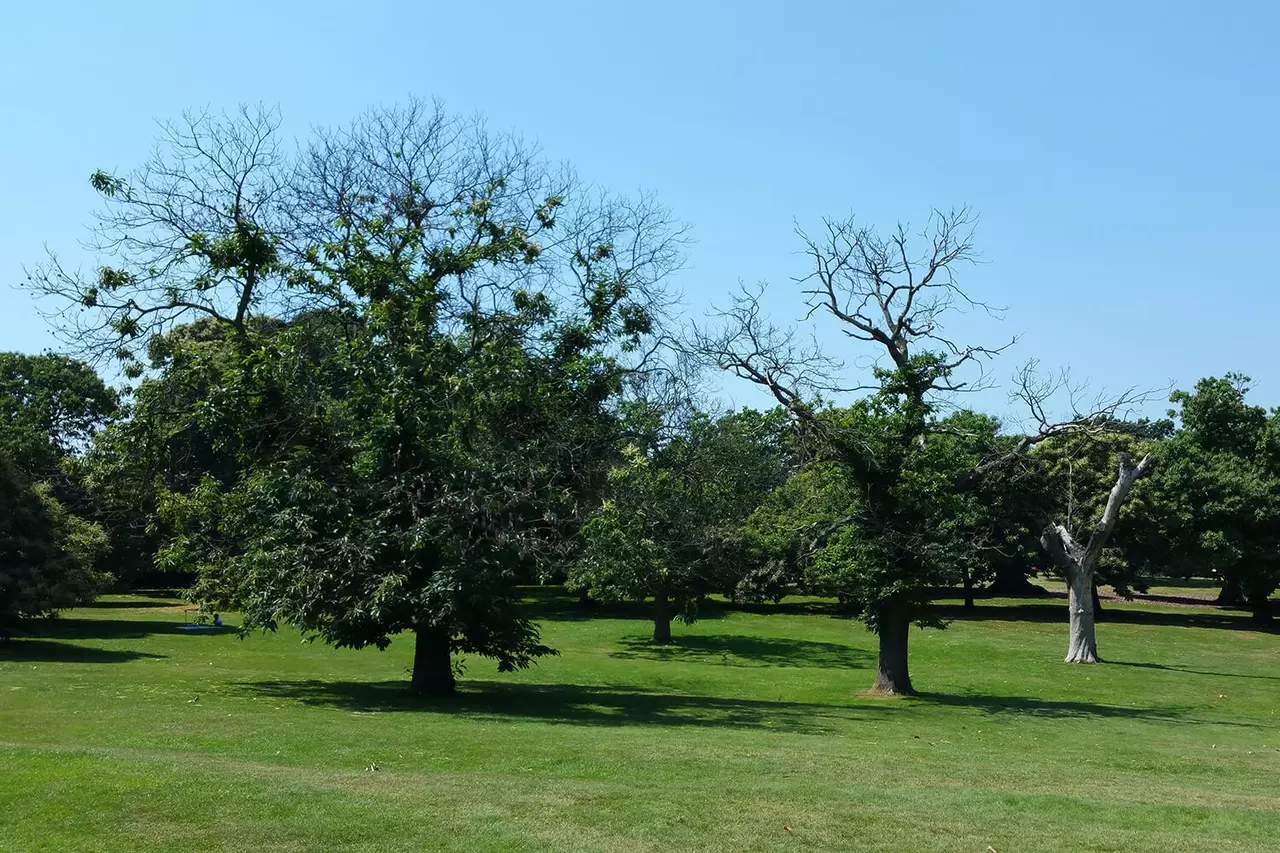
6. Oriental chestnut gall wasp
What is it?
Oriental chestnut gall wasp, (Dryocosmus kuriphilushost), is considered a low-impact pest of sweet chestnut trees, (Castanea sativa).
What happens?
It causes abnormal growths on buds, leaves and petioles (the stalk that joins a leaf to a stem). However, in high numbers the wasps can weaken sweet chestnut trees and make them more vulnerable to other tree pests and diseases.
The possible long-term impacts are foliage loss and small areas of damage which affects vitality. There might be a link with an increased vulnerability of the trees to sweet chestnut blight.
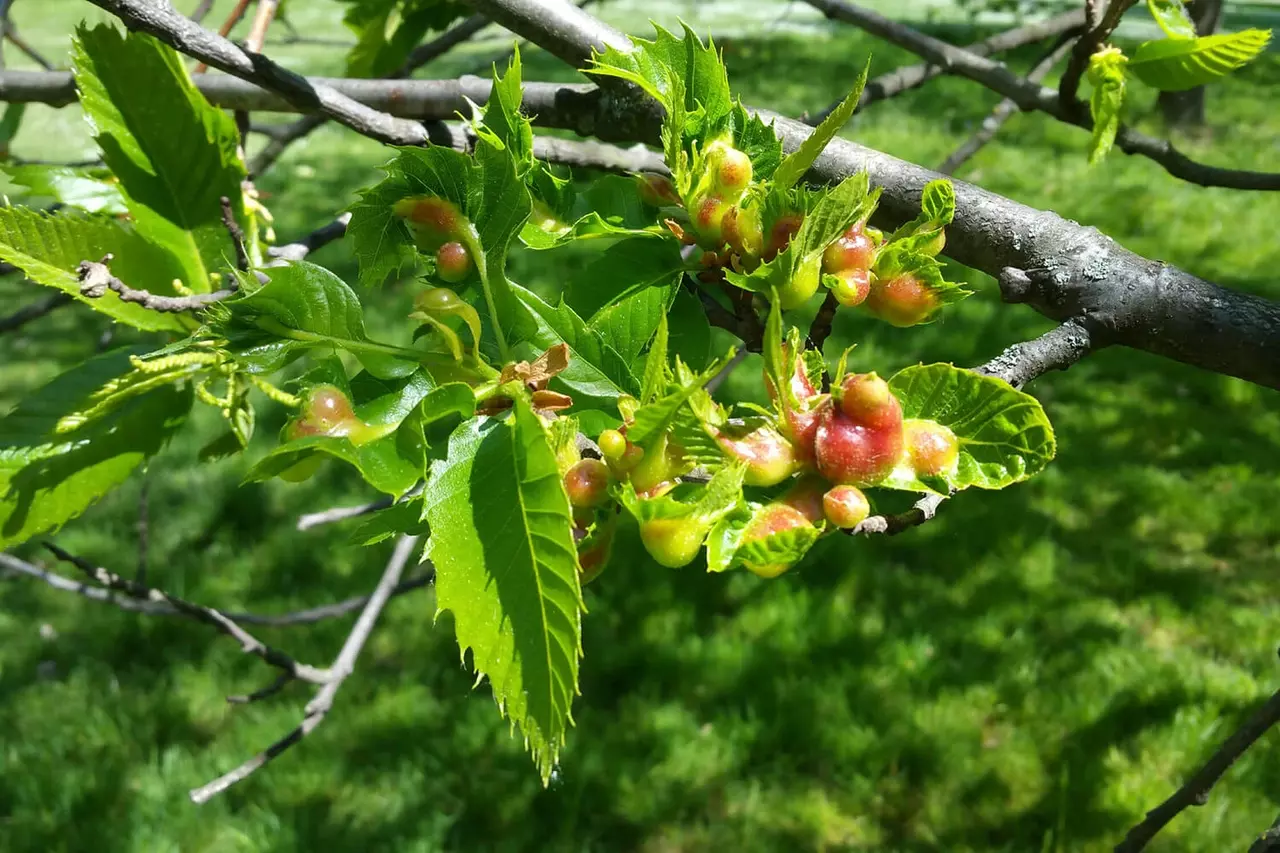
7. Sweet chestnut blight
What is it?
Sweet chestnut blight, Cryphonectria parasitica is a fungus which affects sweet chestnut trees (Castanea sativa).
What happens?
Sweet chestnut blight attacks the bark and cambium (the actively growing area of the tree just under the bark) and usually ends up killing the tree.
Cracks develop in the bark which can develop into cankers (dark oval-shaped sunken wounds) and eventually lead to tree girdling – the loss of the bark around a branch or the trunk. This can cause brown, wilted leaves and kills branches. You might also see orange fruiting bodies appear, sprouting long orange tendrils – which produce spores spreading the blight.
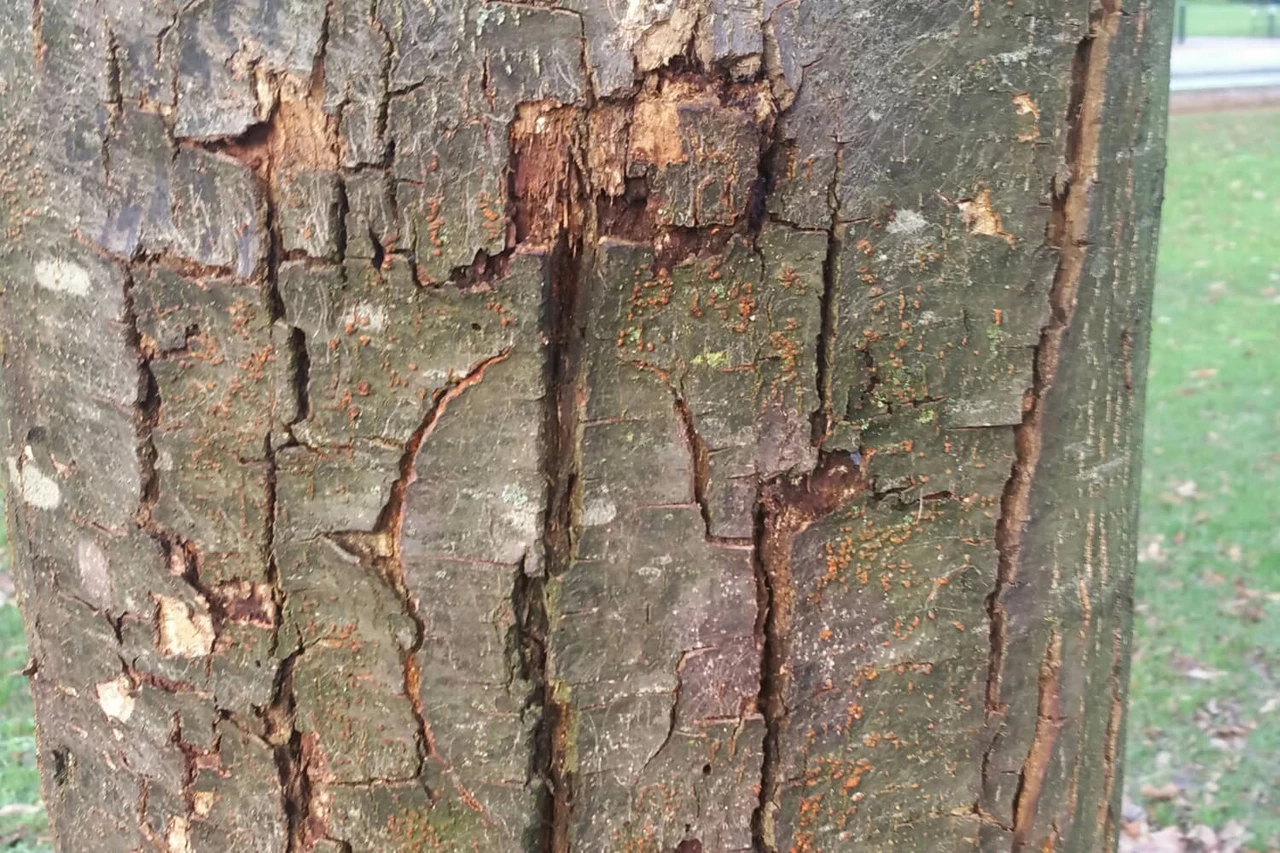
8. Future threats - Chalara ash dieback
What is it?
Ash dieback (Hymenoscyphus fraxineus) is a fungus affecting ash trees (Fraxinus species).
What happens?
the fungus causes a blackening and wilting of leaves and shoots. The disease will end up killing infected trees. Ash die back is still presently considered a disease of the countryside and although there are no infected trees at The Royal Parks, the risk is increasing and our tree experts are regularly monitoring for the disease.
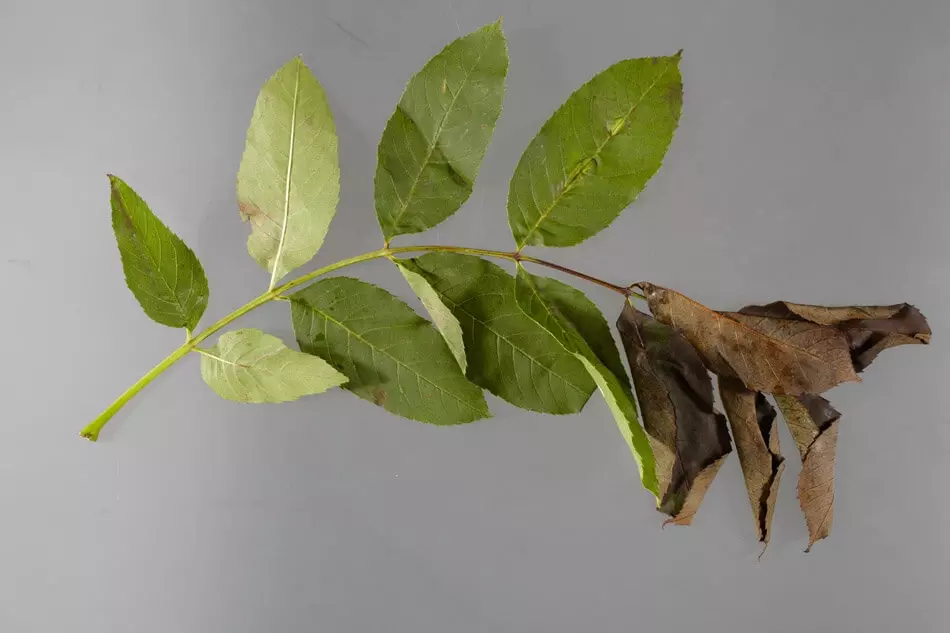
Other potential future tree pests and diseases
There have been no reported outbreaks in the UK of any of the other possible future tree problems such as canker stain of plane (currently in central France), emerald ash borer beetle (currently in Russia) or the bacterium Xylella fastidiosa (southern in Italy and Spain), but we remain vigilant and ready to respond.
Related Articles
-
 Listen
ListenNational Tree Week
In this episode, recorded for National Tree Week, Community Learning Officer Laura Ashfield talks to tree expert and arboriculturist Greg Packman.
-
 Read
ReadA day in the life of a Royal Parks arboriculturist
Find out what it's like to be a Royal Parks arboriculturist
-
 Read
ReadThe best nature walks in London
A selection of the best nature walks in London for you to enjoy